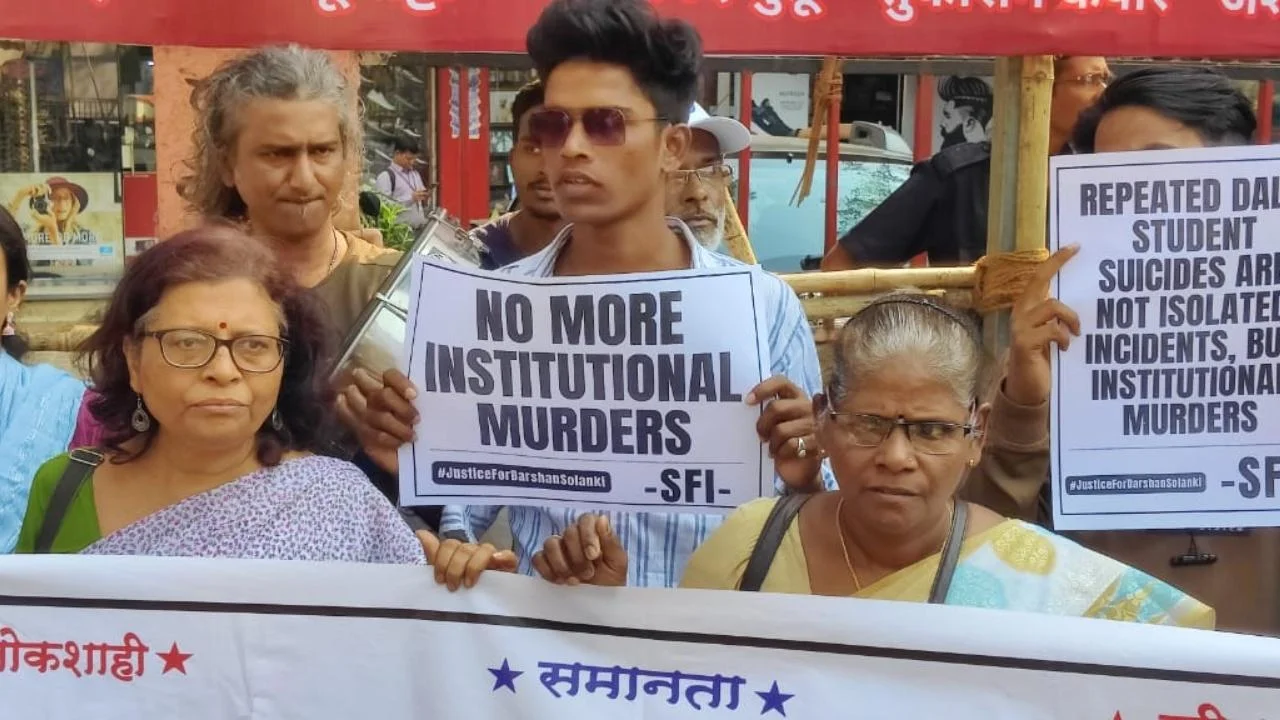It is not possible to break caste without annihilating the relegious notions on which the caste system is founded
Ambedkar
The Indian caste system is historically one of the main dimensions where people in India are socially differentiated through caste, class, religion and gender. In academic institutions, caste discrimination is a harsh reality and young Dalits are facing oppression from the so-called savarnas. Education has always been a privilege reserved for the upper classes. The Right to Education Act provided compulsory education to children in 2009 and enforced it as a fundamental right under Article 21 A.
However, students who belong to lower castes receive poor quality and inadequate education from schools. Dalit students face discrimination from the school- not only from other students, but also from teachers. They are forced to sit separately, eat separately, and clean toilets. The Indian Government attempts to prevent discrimination towards lower caste people. But still, upper caste learners are privileged inside the classroom. The recent increase in suicide among lower caste students in higher educational institutions has once again drawn attention to this inequality.
Rohith Vemula: the oppressed caste student who died fighting for his rights
This death by suicide highlights the plights of Rohith Vemula, an aspiring Indian youth. Born on 30th January 1989, Rohith was an Indian Ph.D. scholar at the University of Hyderabad. On July 15, the university stopped paying his fellowship of 25000 per month after he was found raising issues under the banner of the Ambedkar Students Association [ASA].
Born on 30th January 1989, Rohith was an Indian Ph.D. scholar at the University of Hyderabad. On July 15, the university stopped paying his fellowship of 25000 per month after he was found raising issues under the banner of the Ambedkar Students Association [ASA].
University officials denied all allegations of discrimination in non-payment of fellowship. Five students were suspended in September 2015 from the university for being part of the group spreading awareness. Rohith Vemula was one of the suspended students. The temporary suspension of fellowship and the unspecified duration of suspension forced Rohith Vemula to die by suicide.
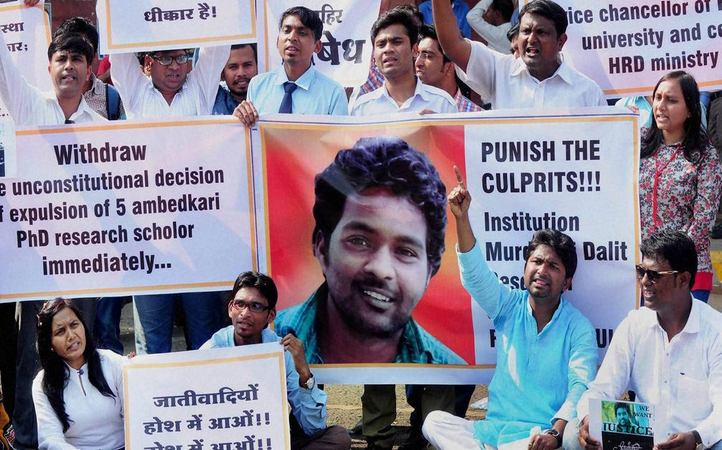
Rohith’s suicide generated widespread anger from all over India and the world. The institution of “caste” in India remains crucial in understanding Rohith Vemula’s life and his tragic death, inside the university as well. In the current social-political scenario it shows how caste-based politics can play with the life of educated, aware, and empowered youths whose careers are gambled away by petty politics.
The institutional murder of Fathima Latheef, a student of IIT Madras
Fathima Lateef was a talented, promising first-year master’s student of Humanities and Development Studies [integrated] at IIT Madras. Her report shows Fathima Latheef was a brilliant student and scored well in all subjects. The fact that she, as a Muslim, scored so well became a major reason for upper caste majoritarian distress. She ended her life on November 9 because she had been discriminated against based on religion.
Initially, the case was investigated by Kottapuram police under section 174 of the criminal procedure code for unnatural death. After retrieving a suicide note from her mobile phone, it was revealed that she had been facing harassment from three professors of the department. The death of the student sparked protests from political parties and student organisations. The case was transferred to a special team, led by an additional commissioner of police.
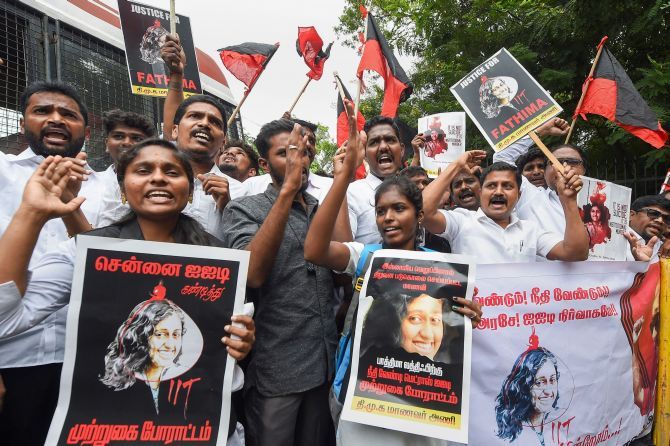
CBI, after completing the investigation, has filed a final report of 2000 pages in the Supreme Court. It has concluded that Fathima ended her life because she had been homesick and had psychological issues, even after the retrieval of a suicide note from her mobile phone where she specifically mentioned the name of the professors. The role of the teachers is highly important in Fathima Latheef’s suicide. But that has not been properly investigated by the Institute management. The RSS-backed teachers in the institution orchestrate planned attacks on Dalits, Muslims, and other minority students which force them to die by suicide.
The suicide of Dr. Preethi due to caste discrimination and humiliation
Dr. Preethi is a medical postgraduate student of Kakatiya Medical College in the Warangal district of Telangana. She belonged to the Lambada community. She faced severe caste discrimination and targeted humiliation from Dr. Md Saif, a second-year MD student at Kakatiya College. Dr. Preethi was found lying unconscious in the staff room at MGM Hospital, Warangal, while on duty.

The police arrested 27 year old Dr. Md Saif on February 24 for the former’s suicide attempt. She is said to have attempted suicide by injecting anesthesia drugs due to Dr. Md Saif’s harrassment The police relied on the data retrieved from the cell phones used by Preethi and Saif. The police concluded that Preethi had been subjected to severe harassment. The Telangana police have cited ragging-related laws and SC/ST [prevention of Atrocities Act] in addition to charges of abetting suicide against Dr Md Saif.
Caste prejudice and violence in institutions
Caste prejudice is institutionalised in the Indian educational institutions, particularly in the field of medicine. The person who shares experiences of caste-based discrimination in higher educational institutions gets accused of being ‘obsessed with caste indenties‘ or being ‘over sensitive‘ about it. Even as the student population has become increasingly diverse, the high incidence of suicide among Dalit students point to continuing discrimination, exclusion and humiliation in educational institutions.
After analysing some cases of suicide, academic Anoop Singh concluded that there seems to be something more than caste discrimination which played a significant role in driving these extraordinary individuals into committing suicide and that ‘elite professional institutions are the places where caste prejudice is so firmly entrenched that if has become normal‘.
Political scientist N Sukumar’s research gives as an insight into the discrimination faced particularly by Dalit Students, and how caste come into play in interactions of Dalit students with upper caste students, teachers and faculty.
The caste prejudice in the educational institutions create an environment that reinforces and maintains a divide between Dalits and Non-Dalits. Political scientist N Sukumar’s research gives as an insight into the discrimination faced particularly by Dalit Students, and how caste come into play in interactions of Dalit students with upper caste students, teachers and faculty.
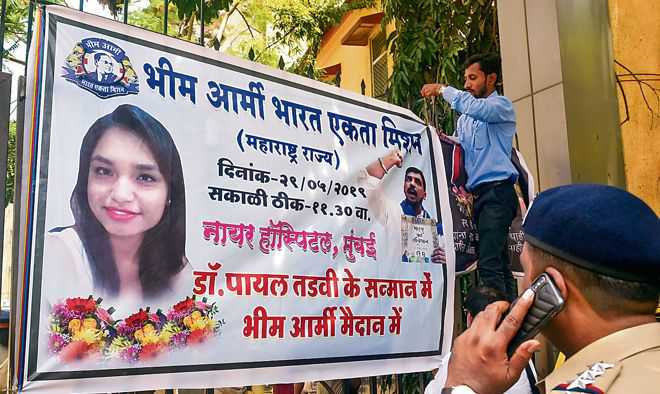
Education is a fundamental right of each and every child. Institutions also offers students the possibility of learning and Internalising values of solidarity and tolerance. They are taught to build friendship and gain critical thinking abilities. For many students, however these educational institutions create the environment of violence including verbal abuse, intimidation, humiliation, sexual violence and gang violence or other forms of cruel and humiliating treatment at the hands of teachers and other staffs.
For many students, however these educational institutions create the environment of violence including verbal abuse, intimidation, humiliation, sexual violence and gang violence or other forms of cruel and humiliating treatment at the hands of teachers and other staffs.
The negative impact of violence in institutions goes beyond the students who are directly affected by it. For these students, the potential and promise of educational institutions is undermined by pain, suffering and fear. The United Nation convention on the rights of the child requires states to take all appropriate measures to protect children from violence.
In IIT Madras, there is a history of student suicides, with five students from different departments having committed suicide in recent years. This type of incident started with Rohith Vemula and continues till Fathima.The murder of 19 year old Darshan Solanki, a first-year BTech student who was studying at IIT Bombay and died in the hostel building, and recently, the death by suicide of a Dalit woman doctor in Punjab, all point towards discrimination based on caste.
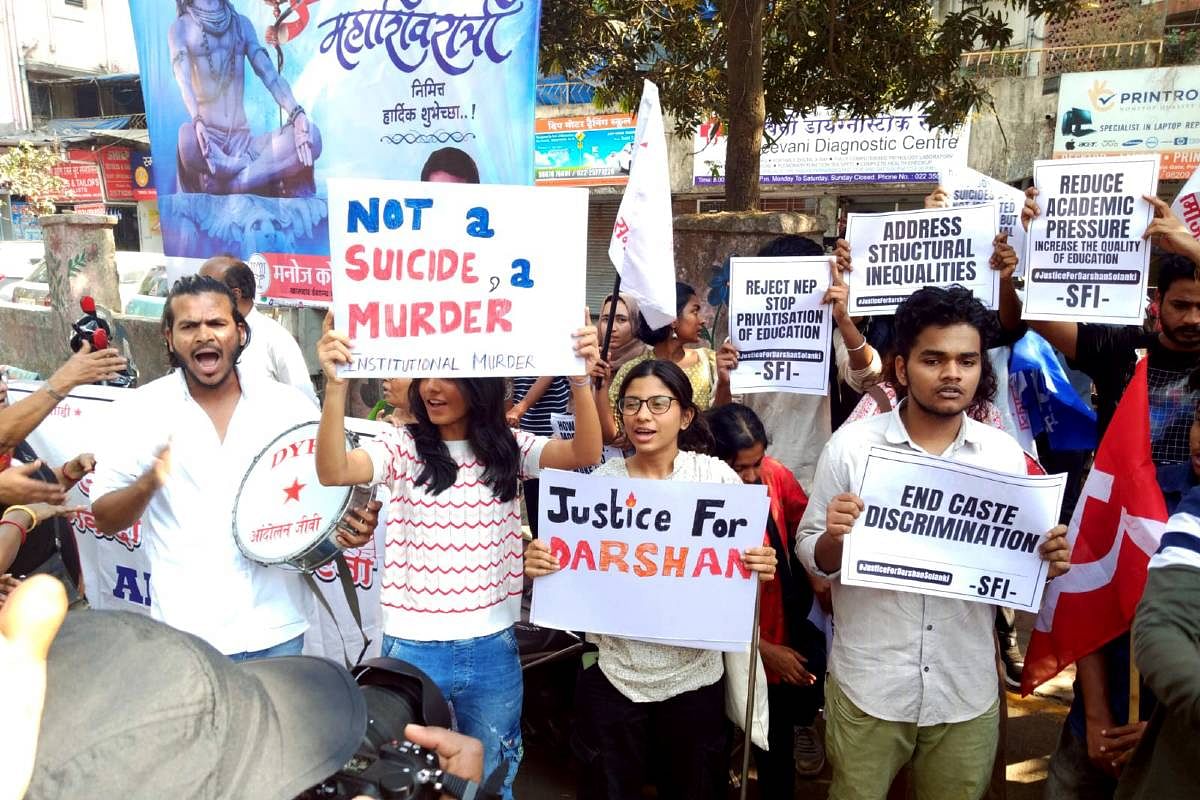
From 2014-21 122 student died by suicide at IITs, IIMs, and IISC at India’s elite institutions. Of these students, 24 belonged to the SC community, 3 were STs and 41 were OBCs. These institutional murders are driven by the inaction of educational institutes which lack empathy. The excessive imposition of academic pressure on students, especially targeting individuals based on caste, culture, and gender, creates a history of death in universities. According to the latest report of the National Crime Record Bureau [NCRB] 16.4 lakh people died by suicide, an increase of 7.2 percent from 2020 when the percentage of students dying by suicide was 8 percent. The reasons for this are academic pressure, social stigma, caste discrimination, abuse of management and many.
Whenever a student from a marginalised community achieves something in their academic career, the first reaction they get from these upper-caste /savarnas is that they got it because of their caste. In the Indian social system, caste is a solid structure which is alive and kicking. A stringent caste system leads to less equity in education. Socio-economic backwardness resulting from caste discrimination over the years can be considered a major contributor to educational disparity among different castes in India.
The educational backwardness of the underprivileged groups is primarily due to ideas and behaviour linked with the caste system based on social distinction. There is evidence of discrimination even today.
The educational backwardness of the underprivileged groups is primarily due to ideas and behaviour linked with the caste system based on social distinction. There is evidence of discrimination even today. Thus caste, as an institution, is inevitable and could last for years. The key conclusion and reccommendatios of experts will be a crucial contribution to raise awareness about the important initiatives promoted across nations to prevent and address violence against students in institutions and to mobilise decisive action to accelerate progress in violence prevention and elimination.
References
Faculty of Economics /University of cambridge https://www.econ.cam.ac.uk/people-files/faculty/si105/VidyaVedaVarna.pdf
JSTOR
https://www.jstor.org/stable/25475972
Taylor and Francis
https://www.tandfonline.com/doi/abs/10.1080/00220380500186960
Interview with students of educational institutions [IIT].


